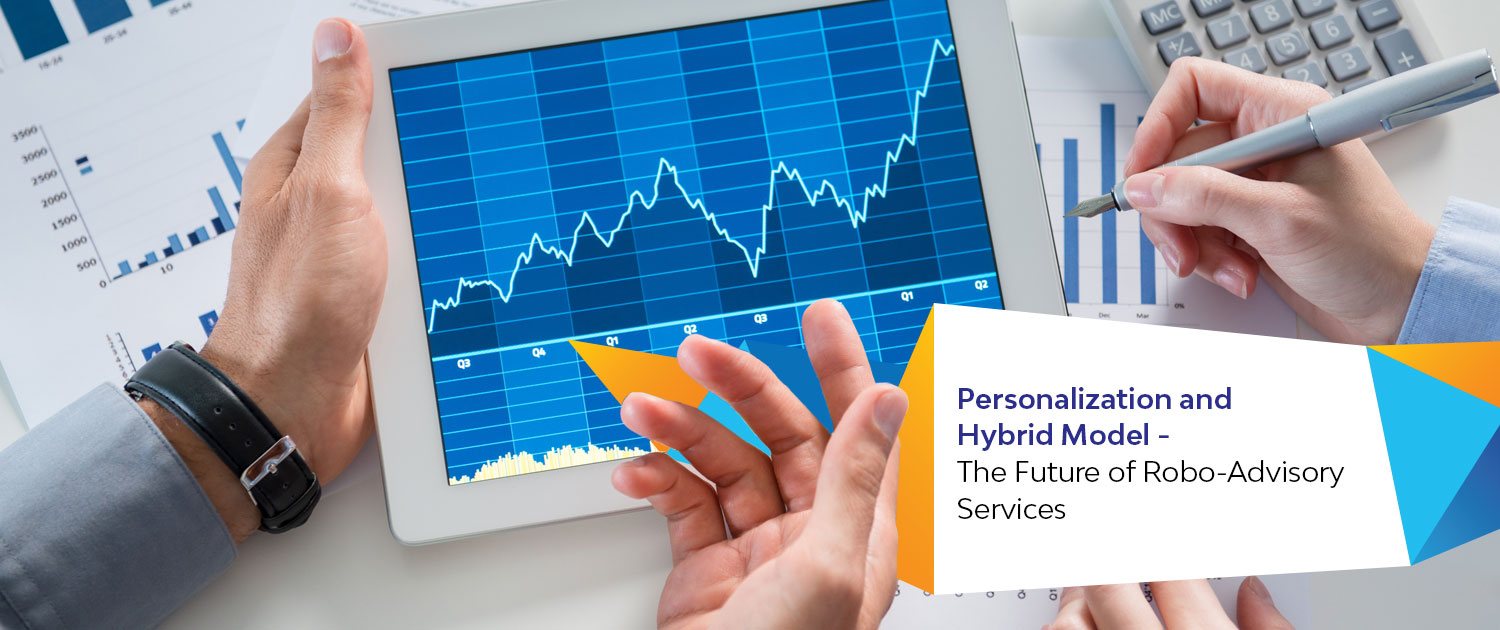Reimagining robo-advisory services for real impact
Why personalization and a hybrid model is the way forward
The wealth management landscape is taking on a completely new shape and form, even as we speak. Since their original launch less than a decade ago, robo-advisors are now a common trend, making inroads into mainstream wealth management activities with the promise of fully autonomous advice capabilities, expected soon.
Robo-advisors are predicted to manage USD 4.6 trillion in AUM by 2022. But while this is an exciting trend, it’s not all about the market hype or investor activity – robo-advisory is still a nascent space, occupying only a fraction of the world’s total AUM volumes. The early optimism is slowly giving way to a shift in perception, with considerations around client-advisor relationships and whether a ‘personal touch’ is required. Back in 2016, a report mentioned 77% of clients have full faith in their human financial advisors — and that success will depend on the ability to balance the best of both worlds.
The undeniable limitations of robo-advisors
Today, robo-advisors primarily use algorithmic or rule-based automation to customize client portfolios. This is a simplistic framework which segments clients in broad strokes and assigns pre-built portfolios based on existing inventory. Clearly, this is the first stage in the evolution of a still-evolving technology.
The current robo-advisory model is not capable of hyper-personalization – it can only group and assign (or at best, adjust portfolios based on market movements), but not build individualized risk profiles and AUM portfolios, with the finesse of a human being. Pure-play robo-advisors are suitable for small-scale, low-risk appetite investors who do not demand (and would rather avoid) a high change frequency in portfolio composition.
Enhancing the Robo advisory services with the effectiveness of ML & Data
The true potential of robo-advisory will be realized not through technology as is available in its current state, but through extensions of its myriad capabilities. Briefly, this will span two separate trends:
- The development of a behavioral finance engineAmong the most sophisticated components of an effective robo-advisor, is its power to automatically churn the right investment advice and make portfolio alterations at blazing fast speeds. Instead of the basic rule-based configurations in use today, an AI engine, with the ability to deploy machine learning for gathering insights on client preferences, is the way forward.
- The incorporation of an NLP-based service interfaceTo transform customer interactions and for seamless adoption of robo-advisory into the larger customer experience paradigm, the wealth management business needs to proactively look at building and incorporating a voice-based interaction layer, which includes Natural Language Processing to accurately understand client instructions and speech patterns.
Hybrid is the future
The industry is slowly waking up to the inherent constraints of automated robo-advice services. While it offers a useful service bundle at a competitive price point, it cannot be aligned to the needs of even the most modestly complex financial portfolio.
Hybrid advisory is a more viable and future-proof approach. By 2025, hybrid robo-services are projected to occupy 10% of total AUM, compared to just 1.6% managed by pure-play robo-advisers. This hybrid model will build on the automated robo-advisory tools in the market today, combining simple rule-based workflows, truly autonomous technologies, and strategic human intervention to create a 360-degree digital financial adviser.
More from Murali Nair
Here is a fact check:Studies have shown that by 2025, we could expect enterprises to potentially…
To develop an effective Data and Analytics Strategy, it needs to be based on assessment of…
Latest Blogs
Core banking platforms like Temenos Transact, FIS® Systematics, Fiserv DNA, Thought Machine,…
We are at a turning point for healthcare. The complexity of healthcare systems, strict regulations,…
Clinical trials evaluate the efficacy and safety of a new drug before it comes into the market.…
Introduction In the upstream oil and gas industry, drilling each well is a high-cost, high-risk…




